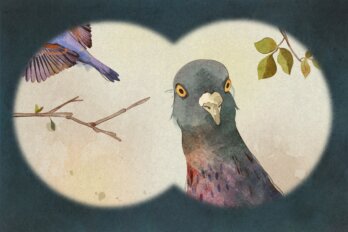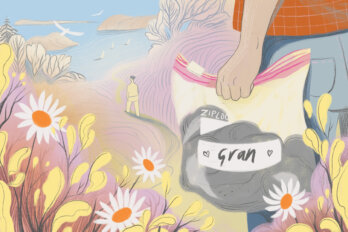On March 7, Memorial University of Newfoundland president Vianne Timmons published a statement about her ancestry. In it, she wrote, “I am not Mi’kmaq. I am not Indigenous. I did not grow up in an Indigenous community.” But this wasn’t a confession or an apology. Though Timmons had said for years that she had Mi’kmaw ancestry, and though she had previously identified as a member of the Bras d’Or Mi’kmaq First Nation in Nova Scotia, she wrote that she had never made a false claim to Indigenous identity.
The motivation behind her statement became clear the next day, when the CBC published a detailed investigation of her ancestry. Timmons is not the first public figure whose claim to Indigenous ancestry has lately come under scrutiny. Since Giller Prize–winning author Joseph Boyden made headlines for his shifting identity claims in 2016, similar stories have emerged with disturbing regularity, though no two are exactly the same. Timmons’s story represents an increasingly popular North American pastime: grasping at the furthest branches of a family tree in search of an Indigenous ancestor. And in the ambiguous zone between Indigenous citizenship and Indigenous ancestry, from where Timmons drew her personal and professional identity, a crisis of disinformation is taking root.
In an interview with the CBC’s Ariana Kelland, Timmons explained that she learned of her ancestry in her thirties, when her father, a hobby genealogist, presented her with “binders and binders” of research linking Timmons to a Mi’kmaw great-great-great-grandmother. Timmons repeatedly emphasized that she has never claimed Mi’kmaw identity, only ancestry. As a long-time advocate for Indigenization in academia, she would clearly understand the distinction between the two—but, presumably, she also understands that many Canadians don’t and would draw their own conclusions based on her embrace of this biographical detail. Her incorporation of that ancestry into her CV is framed purely as an act of reclamation and healing. “My father asked us not to be ashamed of it, because he was,” Timmons told Kelland. If her father was truly ashamed to be distantly related to a purported Mi’kmaw person, perhaps that’s because being a little bit Indigenous had less cachet at the time of his discovery than it does now. In 1996, when Timmons was in her late thirties, only 860 people in Nova Scotia identified as Métis. By 2016, that number had grown to 23,315—an increase of over 2,600 percent.
If Indigenous people are oppressed, why are so many people claiming Indigenous identity? That’s the refrain that follows a revelation like Timmons’s. It’s easy to see where this skepticism comes from when questionably “Indigenous” people have ascended to such professional heights: university president, award-winning filmmaker, award-winning novelist, premier of Alberta.
Timmons only began to identify as Mi’kmaw-ish in her late thirties; until then, she believed herself to be a settler. The barriers faced by many Indigenous people—the intergenerational trauma of residential schools, the socio-economic disparities, the racism and discrimination—did not apply to her. For her, and for others who stumble on a long-ago ancestor, being Indigenous is not an inhabited identity; it is an accessory that one can take on and put away as easily as you might delete a line from your CV. And as our institutions seek to diversify in the most superficial sense of the word, that accessory offers people like Timmons an advantage over both non-Indigenous and Indigenous people: the insinuation of having overcome an obstacle that was never in their way. The cumulative effect is an impression of Indigeneity as a marketable asset, divorced from its historical, political, and cultural significance. The essential power structure of whiteness remains intact, and the sprinkle of artificially flavoured Indigeneity covers up the bad taste of settler guilt.
That Timmons listed her membership with the Bras d’Or M’ikmaq First Nation on her CV along with her other credentials and accomplishments suggests she understood its professional value. But that association also points to a more troubling kind of appropriation, one that goes far beyond just one person. Timmons did not claim ancestry of one of the thirteen Mi’kmaq nations in Nova Scotia or that of another recognized First Nations community. Despite its name, the Bras d’Or M’ikmaq First Nation is not a nation at all. It is one of more than ninety such organizations in eastern Canada and the United States fighting for political recognition and legitimacy—an aspiration underscored by their misleading names. And yet, in her interview with Kelland, Timmons repeatedly refers to Bras d’Or as a “band,” though that term has a specific legal definition. She takes care not to discredit their identity claims even as she distances herself from her own.
Timmons has stressed that she did not attempt to profit from her identity claim, but an explicit goal of these groups is to acquire rights and benefits—or, more precisely, to take the rights and benefits intended for Indigenous people. On the archived website of the Bras d’Or First Nation, the group asserted “the continuing existence of our rights to . . . traditional Mi’kmaq hunting and fishing territory,” although those rights are restricted to recognized First Nations. Fraudulent status cards, issued by groups like Bras d’Or, have been used by individuals to claim tax exemptions. Timmons’s effort to separate herself from that objective without denouncing it elides the harm these organizations can cause Indigenous people—as well as her role in legitimizing them by association.
On March 13, six days after her first statement, Timmons announced she would be taking temporary leave from MUN, later confirmed to be paid leave, while the university convened Indigenous advisers to discuss a path forward. Whether she returns to her role or not, the fallout of her actions extends beyond the gates of the university. “Any action I have taken in sharing my story or promoting indigenization in my professional roles was always undertaken in a spirit of reconciliation, curiosity and continued learning and respect for Indigenous Peoples,” she wrote. That she sees her appropriation as an act of allyship is precisely the problem. That so many other Canadians are doing the same is a catastrophe. It will lead us to a future where Indigenous people are not just excluded but erased.





